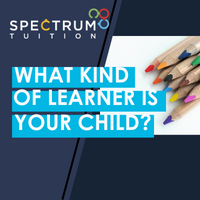Did you know that not all children learn in the same way. In fact, there are 7 different intelligences or ways to learn? These 7 different learning styles are known as Musical, Visual, Verbal, Logical, Kinaesthetic, Social and Reflective. Each child has a different style that works best for them. Quite often, when students struggle with new concepts, the problem lies, not with their ability to learn, but with the style in which the material is being taught. Figuring out what kind of learner your child is will put you at a great advantage when it comes to helping with their education in the future. Today, I will explain the 7 different styles of learning and how you can figure out what kind of learner your child is.
1. Musical Learners
Musical learners respond well to sounds, melodies and rhythms. The things that they remember and appreciate the most are those things that they can chant, sing or put into a rhythm. Depending on their age, musical learners can benefit from simple chants such as “three in the bed”, singing the alphabet song, listening to times tables songs, or even using music to remember the periodic table!
2. Visual Learners
Visual learners prefer to see what they are learning. They respond extremely well to pictures, diagrams, colour codes and mind maps. Often, they have trouble organising their ideas unless they can sketch them out on a page. Visual learners benefit greatly from having paper, post-it notes, highlighters and coloured pens and pencils at their disposal when brainstorming ideas.
3. Verbal Learners
Verbal learners love language. They respond well to written or spoken explanations and work best when they can put their ideas into words. Verbal learners are often avid readers, and they find it easier to crystallise their ideas by writing them down.
4. Logical Learners
Logical learners prefer clear, consistent rules. They don’t like ambiguity or uncertainty, but prefer to know the exact steps that they have to follow to solve a particular problem. Predictably, logical learners often take to Mathematics due to its predictable and reliably logical nature. That is not to say, however, that they can’t excel in other subjects as long as they are able to figure out a clear, consistent approach.
5. Kinaesthetic Learners
Kinaesthetic learners are physical people. They feel most confident when they are moving or engaging in physical activity. Whilst most people associate learning with sitting still and reading a book, kinaesthetic learners prefer a hands on approach.
6. Social Learners
Social learners are those people who like to talk things out with another person. They love sharing their ideas and coming to conclusions through discussions, debates and questions. Social learners don’t enjoy having to learn alone. If your child is a social learner, encourage them to ask questions, express their views and debate ideas with you and your family.
7. Reflective Learners
Reflective learners are the opposite of social learners. They prefer to get inside their own head and have the time and space to reflect upon information by themselves. Often, reflective learners need to be given some alone time to reflect upon what they have learned.
Do any of these sound like your child? It is important to note that none of these learning styles exist independently. Though your child might be more or less inclined to one or more of the styles we have spoken of today, very few children learn in just the one way. The important thing, especially at a young age, is to expose your child to as many different ways of learning about the world as possible, and engage them on as many levels as you can, so they have the chance to show their strengths!


